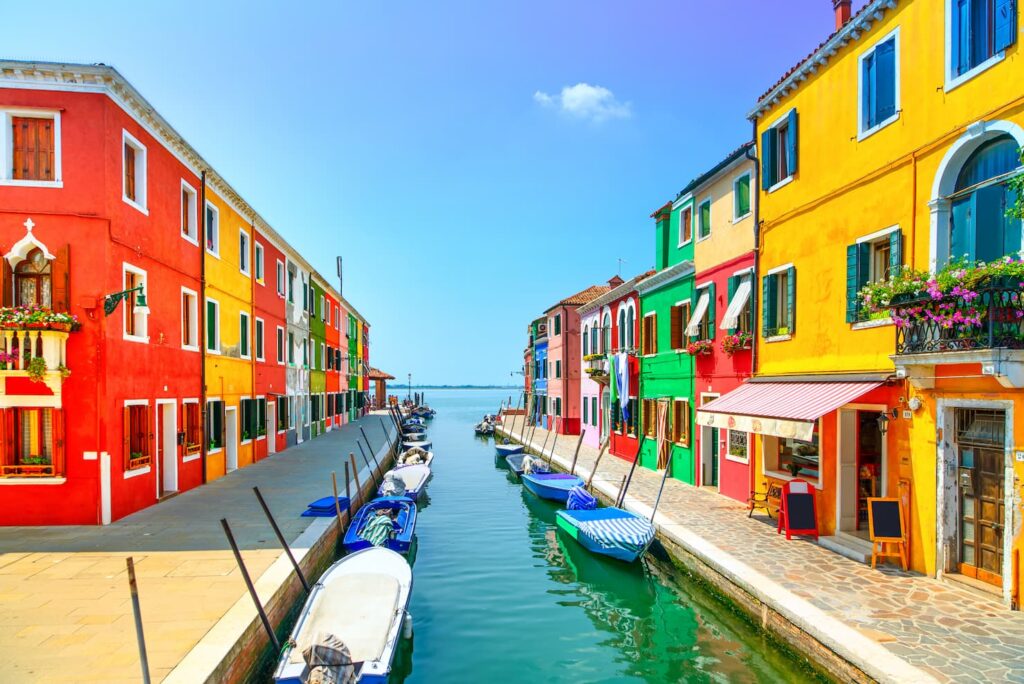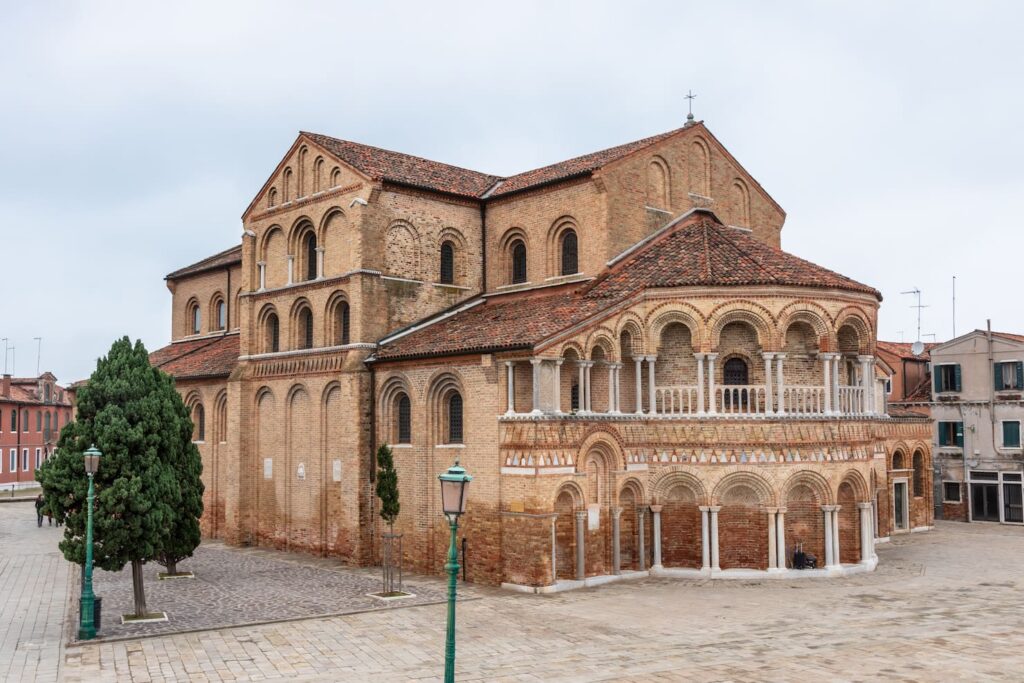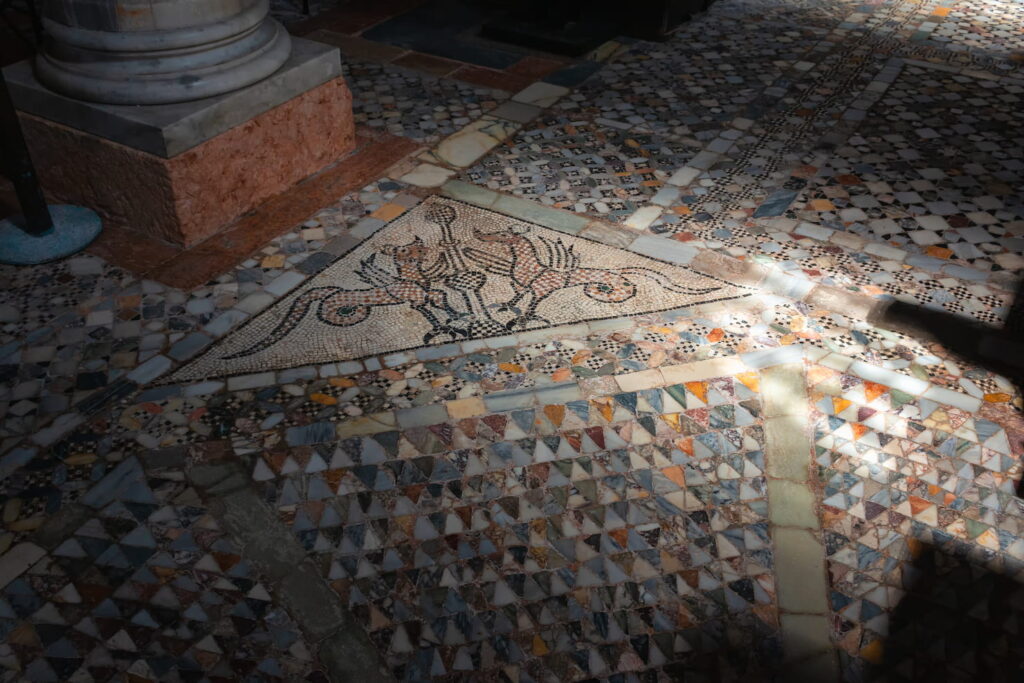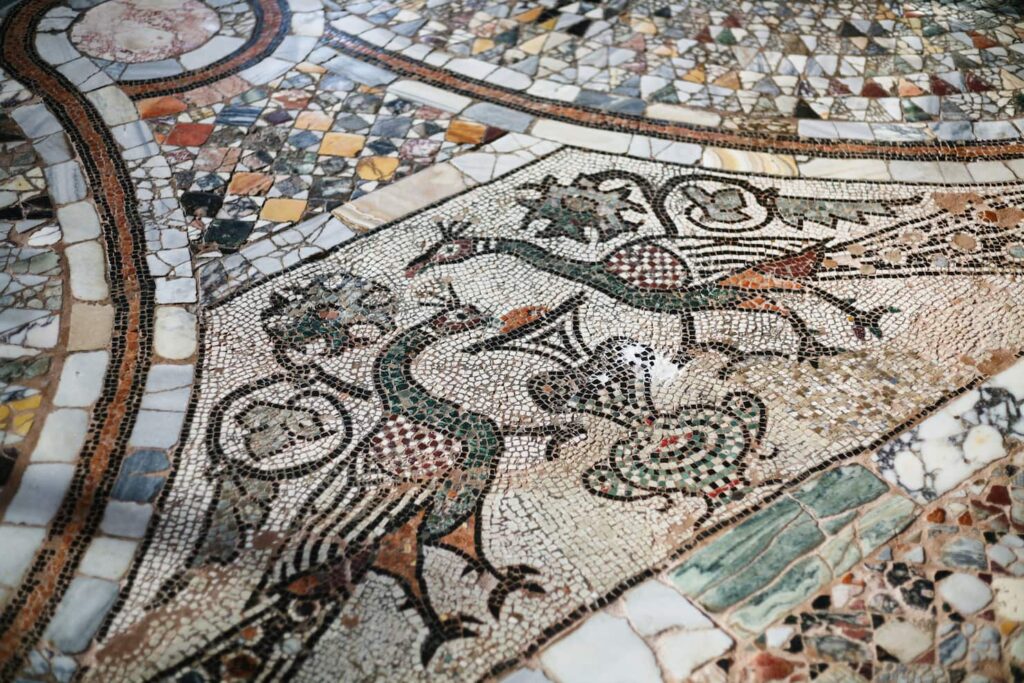Are you one of those travelers attracted to sacred art, but don’t want to give up some natural glimpses? Murano is for you!
In fact,on this beautiful island in the Venice lagoon, art and spirituality come together right among the beautiful canals.
I am talking about the Cathedral of Murano: the Basilica of Santi Maria e Donato. Just a few steps from the vaporetto stop you can admire this church.
What is hidden inside? A 12th-century mosaic floor, the relics of a saint who defeated a dragon and… a miraculous botticella!
Are you curious? Read on to find out everything you need to know about Murano’s wonderful and historic basilica.
Wait! Book your Murano tour online and discover its cathedral as well as many other attractions on the island: with one click you’ll have lots of benefits and you won’t have to think about anything!

BEST-SELLING
Murano, Burano and Torcello tour + Glassblowing demonstration
Discover a scenic boat tour of the islands of Venice with a visit to a Murano glass factory and glassblowing demonstration
Secure payment
Instant confirmation
Mobile ticket
History of the Basilica of Saints Mary and Donatus

Cathedral Basilica of Saints Mary and Donatus | ID 136512985 @ Juergen Schonnop | Dreamstime.com
The Basilica is thought to have been founded in the 7th century and at first was dedicated to Santa Maria Assunta: it was the most important in Murano and all the others depended on her.
Later, the figure of San Donato Martire was also linked to this splendid church: in 1125 the island was conquered by Venice and the saint’s body was transported here.
Its great splendor came right after this event, precisely in 1141 when the church underwent a makeover: the floor became a wonderful mosaic.
Composites of marble and polychrome glass pastes gave the basilica a new look, influencing the very art of the place and making the church a true jewel.
A second renovation took place in the late seventeenth century at the behest of the bishop of Torcello, and the basilica was adapted to the Baroque style.
But this was not the last intervention on its structure: considered unsafe, the church was restored between 1868 and 1873, changing again some components inside.
But not only splendid mosaics: do you know what is hidden inside this church? Legend has it that behind the altar are the bones of a dragon!
A popular story, in fact, says that St. Donatus managed to eliminate a dragon thanks to the sign of the cross, and the monster’s bones are contained here along with the saint’s relics.
The apsidal mosaics and cosmatesque floor
The mosaics contained within are perhaps the most interesting part to admire, especially for art lovers.
Definitely, you will not be able to miss the apsidal mosaic depicting a wonderful praying Madonna with a gold background.
Dating from the 12th century, it is one of those mosaics in which you can admire the Byzantine teaching to the Venetian masters.
Under the mosaic, however, it is possible to observe some frescoes depicting the four evangelists: their author is Nicolò di Pietro and they are more recent since they date back to 1404.
Finally, the Assumption is celebrated with a stucco bas-relief placed in the middle of the frescoes: this is, however, from the 18th century.
The other marvelous mosaic to be admired is the floor mosaic, surely datable to 1141 thanks to an inscription contained by it.
It coincides, therefore, with the creation of the mosaic floor of St. Mark’s Basilica and certifies the fertile period in which Venetian masters practiced the Byzantine artistic language.
The floor is made of marble, precious stones and polychrome glass pastes and depicts symbolic images of Christian art such as peacocks, griffins, Solomon’s knots, dragons and more.

Floor mosaic of Murano Cathedral | ID 230867573 @ Aleksandr Smirnov | Dreamstime.com
There are two different types of mosaic in the floor: tesselatum and sectile. The former consists of small square tiles while the latter features marble slabs cut into geometric shapes.
The tesselatum was used to depict symbolic elements contained in medieval bestiaries and thus were allegories of human virtues and vices.
The sectile, on the other hand, always represented religious symbolism of a more complex and refined level: for example, beauty was depicted by regular shapes (circle, square, rectangle, hexagon, and octagon).
The mosaic consists of several panels that are sometimes placed side by side while at other times they are separated by a marble frame.
the purpose of the mosaic is not only to beautify the church or amaze the visitor, but it is a true message to the faithful of contemplation and prayer.
Finally, each aisle has a certain subject: the leftaisle tells of the way of the Church, the middleaisle tells of salvation, and the rightaisle depicts the way of baptism.

BEST SELLER EVER
Tour of Murano, Burano and Torcello + Glassblowing Demonstration
Discover a scenic boat tour of the islands of Venice with a visit to a Murano glass factory and glassblowing demonstration
Secure payment
Instant confirmation
Mobile ticket
What to see inside
The interior of the basilica is all to be discovered and admired: obviously devote time to the mosaics, both the apsidal and the floor mosaics.
Observe, however, also the wonderful interior of the church: the aisles are separated from the central one by five columns.
Splendid Greek marble constructions that feature Corinthian-style capitals complete with acanthus leaves: they support graceful segmental arches.

Celebrated peacock figures in basilica mosaic | ID 82067495 @ Vvoevale | Dreamstime.com
Of course, observe the sarcophagus containing the body of St. Donatus: he is the one who gave the church its name and who defeated the dragon with a sign of the cross.
Also, on the high altar you will find two important statues: one depicts St. Lorenzo Giustiniani, descendant of the bishop of Torcello and first patriarch of Venice.
The second, on the other hand, depicts St. Heliodorus, bishop of Altino and patron of the Torcello diocese: that was the one to which the church belonged.
The legend of the “miraculous botticella”
I want to tell you about one last and incredible legend related to this church: that of the miraculous botticella!
If you turn your back to the entrance door, look at the wall above the left colonnade: you will notice the lion of St. Mark.
Look closely and you can see that it is accompanied by a strange little object: a small barrel known as “el botasso de Sant’Alban.”
A legend revolves around that object walled in this basilica: fishermen from Burano found this small barrel floating on the water.
Once they picked it up, they placed it next to the relics of St. Albano and realized that here it had the ability to spill wine without ever running out.
The Muranese, jealous of such a marvel, arranged to steal the precious object in the night, but once they returned to their island they found that it did not have the same effects.
The Buranelli decided to travel to Murano to claim the botticella, but the Muranese, disappointed by the story, decided to wall it up in the basilica, challenging their opponents to retrieve it.
That is why the church preserves such a strange object! Do you think it is legend or reality? In any case, if you want to enjoy a nice glass of wine you will have to look elsewhere by now!
Useful information and tips for your visit
By now I’m sure you won’t want to give up admiring with your own eyes all the treasures hidden inside the basilica of Murano.
Admission is at a very low price: the full ticket is just €3.50 while the reduced ticket is €1.50, and those eligible are students between the ages of 13 and 25.
The contribution is aimed at the maintenance ofthe works and ordinary maintenance and restoration activities of the basilica.
However, certain categories of people are exempt from payment: residents, people with disabilities and their accompanying persons, tour guides or accompanying professors, religious figures and seminarians, and children under 12 years of age.
Visiting hours are from 9 a.m. to 5 p.m., Monday through Friday; on Sundays, however, given the celebration of Mass, access will be possible from 12 noon always until 5 p.m.
Frequently asked questions
Visiting a furnace in Murano has different prices depending on the depth of the experience chosen. On average, the cost is 30 euros, but some furnaces provide more expensive packages or sometimes organize open days where you can enter for free.
It takes approximately three hours to visit Murano, but you may need more than that depending on how thoroughly you wish to explore the island and whether you choose to go inside the attractions.
To see glassmaking for free you will have to choose glassworks that hold an open day; however, this is not an opportunity always granted but is episodic. Some furnaces allow free admission to children under the age of 10.
All the furnaces in Murano are very professional and give unique experiences. However, some are often highly regarded and recommended: for example, I would point you to the Colleoni artistic glassworks or the Fratelli Toso glassworks, the oldest still in operation.
Conclusions
We have come to the end of this article on the Murano basilica: you now have all the information you need to know before visiting the church.
I have told you the history of the Murano Cathedral and what you will find inside: the beautiful floor mosaics and the apse mosaic.
You discovered the legends associated with this place, from that of the dragon defeated by St. Donatus to that of the miraculous botticella.
Finally, I explained what you will find inside before answering the most common questions about the Church of Saints Mary and Donatus.
What about you? Do you believe the legends associated with the Murano basilica or are you skeptical? Tell us yours in the comments!
Art and the sacred come together and the setting in which this happens is the beautiful lagoon of Venice, on the island of Murano: can you imagine anything better? Book your priority ticket and come discover the beautiful mosaics of Murano!
